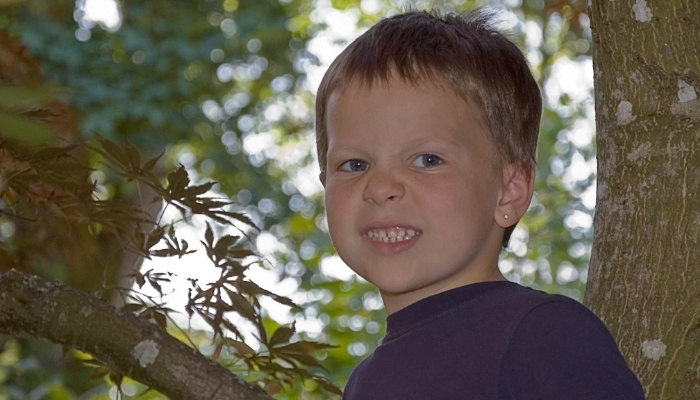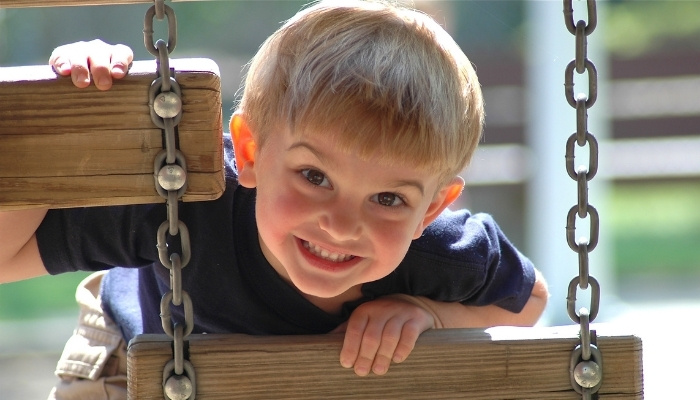During the toddler years, children experience significant growth in their social, emotional, and physical development. By the age of five, they have transformed into a distinct individual with their own behaviors, facing new obstacles, and developing a stronger sense of self-awareness.
Is a 5-year-old a toddler? No, a 5-year-old is not considered to be a toddler. According to the Center for Disease Control and the American Academy of Pediatrics, toddler ages range from 1 to 3. Between the ages of 3 and 5, a child is considered a preschooler.
This comprehensive guide will give you insight into the inner workings of your 5-year-old. Keep reading to learn more about your preschooler’s development and behavior and the tiny human they’ve become.
Understanding Your 5-Year-Old
Five years have passed, and you watched your child grow from newborn to preschooler. The physical changes are evident, but how has your child grown, and where are they in their developmental journey?
What Is a 5-Year-Old Called?
The Center for Disease Control defines a 5-year-old as a preschooler. This designation comes after the toddler ages of 1-3 and before the middle childhood ages of 6-8.
Normal 5-Year-Old Behavior
At the age of five, your child is reaching new cognitive, social, emotional, and motor milestones. As a result, they strive for independence and distance themselves slightly from their primary caregivers.
You’ll notice your child attempting new skills on their own initiative, asking more questions about complex topics, and expressing a lack of emotional control.
Their behavior will fluctuate depending on the circumstances of their day, but guiding them with loving acceptance will help you get through this age with a positive outcome.
5-Year-Old Developmental Checklist
According to the CDC, your child should have accomplished many of the following developmental milestones by age five.
Social/Emotional Milestones
- Follows rules or takes turns when playing games
- Puts on acts or performances for family
- Can complete simple chores
Language/Communication Milestones
- Tells a story they heard or made up with at least two events
- Answers simple questions about a book or story after you read or tell it to them
- Keeps a conversation going with more than three back-and-forth exchanges
- Uses or recognizes simple rhymes
Cognitive Milestones
- Counts to 10
- Names some numbers between 1 and 5 when you point to them
- Uses words about time, like “yesterday,” “tomorrow,” “morning,” or “night”
- Pays attention for 5 to 10 minutes during non-screen time activities
- Writes some letters in their name
- Names some letters when you point to them
Movement/Physical Development Milestones
- Capable of buttoning, zipping, or tying clothing
- Hops on one foot for extended periods of time
5-Year-Old Academic Milestones
What skills or knowledge your child needs to possess depend on where they attend school. This list outlines the skills and knowledge your child may need to possess before entering the education system:
- For safety purposes, your child should know their first and last name, your first and last name, and your phone number.
- Your child should be capable of some fine motor skills like holding a pencil, using safety scissors, and tracing shapes.
- Kindergarteners need to be capable of basic self-care like using the bathroom and washing their hands on their own.
- Your child may need to be capable of identifying letters, numbers, shapes, and colors.
- Your child should speak in full sentences to communicate needs and wants. These sentences should be understood a majority of the time.
5-Year-Old Emotional Development
Your preschooler is transitioning between the world they knew at home and the one they’re experiencing in school. With this environmental change comes a plethora of altered world perceptions.
Every interaction they have teaches them more about how to form relationships and attain knowledge through a conditional lens. They’re likely to act out of emotion at home where your love is unconditional and they are the most comfortable.
5-Year-Old Behavior Issues
Many preschoolers experience behavioral issues around emotional and physical control as a result of their changing environments.
Your child is no longer a toddler who is reliant on a caregiver. Instead, they’re starting to explore the world and become more independent.
In the midst of this, they’re still developmentally young and possess little self-awareness or control. So, there are a couple of issues you’re likely to come across.
Impulsiveness
At this age, children are given more freedom. Without having a hand to hold at all times, they find more ways to make mistakes and do so repeatedly.
Even when they know that the action will result in injury or consequence, a child will likely make an impulsive decision. This gets better with time, but impulse control is not fully developed until adulthood.
Whining and Aggression
Children have a lot of emotions to explore. At five years old, their emotional intelligence is challenged as they balance their own emotions with those of others.
This results in uncontrollable outbursts of anger, sadness, and happiness. Guide your child in how to express their emotions verbally rather than physically.
What To Teach a Preschooler
Teaching your child their numbers, colors, letters, and shapes is important to prepare them for school but provides little real-world advantage.
Skills like spatial awareness, early literacy, communication, focus, social interaction, cause and effect, sequencing, and problem-solving should be prioritized.
These developments are critical for many areas in life, such as education, relationships, and career ambitions.
How To Discipline a 5-Year-Old
The American Academy of Pediatrics outlines positive discipline strategies for preschool-age children. These strategies implement patience, modeling, explaining, and consistency.
Have Patience With Your Child
Taking the time to usher your child into a calm place, ready to receive guidance, makes all the difference. Additionally, listening when they try to explain themselves makes them feel heard and improves caregiver communication.
Lead by Example
Preschool-age children are incredibly observant, even when you don’t think they’re watching. So, modeling the behaviors you want your child to display is often the best way to teach them.
It aligns their perception of the world with what you are telling them is the appropriate behavior as a parent. This promotes a sense of security and stability.
Offer an Explanation
When your child makes a mistake, it’s important to offer an explanation of what they did wrong and how to correct it. Pursuing guidance instead of punishment will improved parent-child relationships and fostered healthy curiosity.
Keep It Consistent
Maintain set boundaries and consequences. The severity of the consequences should correlate with what boundary was broken.
If a new rule needs to be established, you should have a conversation with your child explaining the reason behind the rule and the consequences if it’s broken.

Activities To Do With a 5-Year-Old
5-year-olds require physical and cognitive stimuli to promote development. Here are a few activities you can do at home to encourage growth in your child’s mind, body, and emotions:
Pattern Play
Creating and recognizing patterns is vital to sequencing and the development of critical thinking. This skill is foundational to your child’s understanding of mathematics.
Several toys, like this Pattern Play Game, provide children with an entertaining and interactive way to hone this ability.
Set Up an Obstacle Course
Creating a DIY obstacle course from items around your home encourages your child’s spatial intelligence.
Your child will learn to understand their location relative to other objects and how to manipulate those objects within a certain space. This perception is necessary for skills like writing and art as well as for coordination in sports.
Become a Builder
Building blocks, Legos, and play forts, such as the Foamnasium, stimulates your child’s ability to problem-solve. Additionally, these activities apply concepts like gravity, geometry, and structure, all of which are fundamental skills for engineering.
Read a Book
Even if they cannot read on their own yet, reading to your child has many benefits.
Studies have shown that reading from a young age improves literacy skills, expands vocabulary, aids in concentration, and helps develop empathy. It also allows parents to introduce complex topics in an age-appropriate way.
Related Questions:
What Comes After Toddler?
The Center for Disease Control established the toddler age range of 1-3. After three years of age, children transition from the toddler stage to the preschool stage.
During this time many milestones revolve around acquiring social skills and developing world perceptions.
Should My Child Start School at 4 or 5?
Determining what age to send your child to school should be based on your child’s needs, cognitive development, and family dynamic.
Some parents whose children are interested in education and have the means choose to send their children to school earlier. In contrast, others opt to allow their child to stay in a familiar environment until later in their development.
Wrapping It Up
A 5-year-old is not considered a toddler; rather, they are acknowledged as preschoolers. Preschoolers go through transformational emotional, social, and motor development that can cause behavioral issues.
With the right approach, these behaviors can be curbed and used as a teaching opportunity for your child.
Charley is a mother of three with a passion for raising good humans. With her children in tow, she studies English and has made a career creating content about motherhood. In her free time, she enjoys traveling within the states to kayak, camp, and hike.

